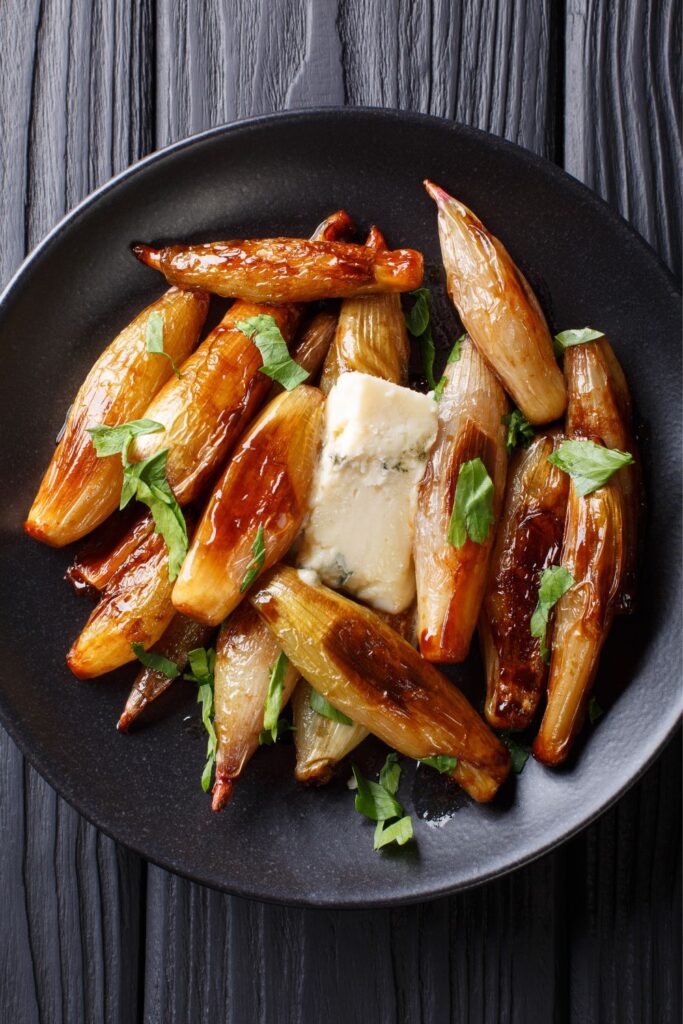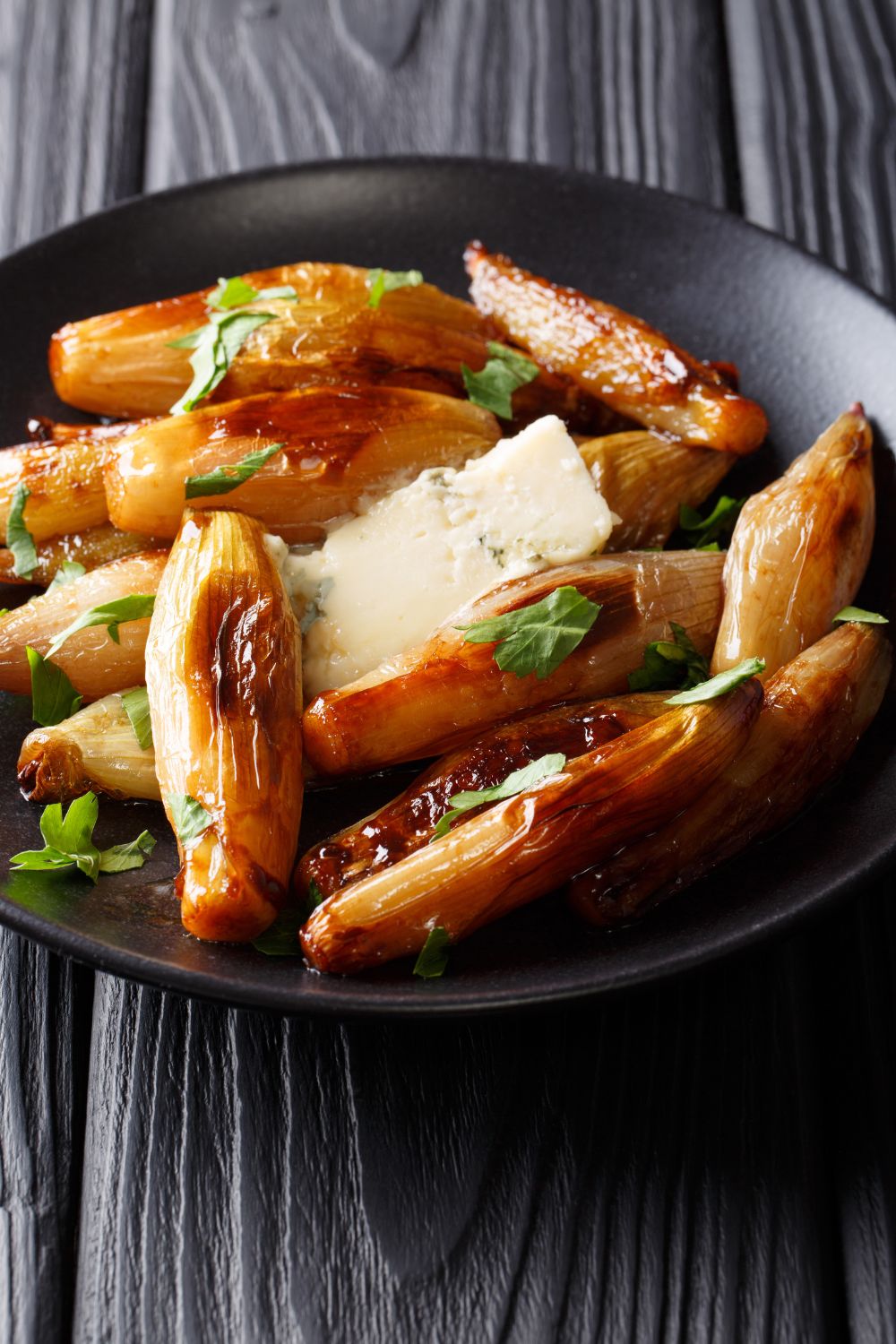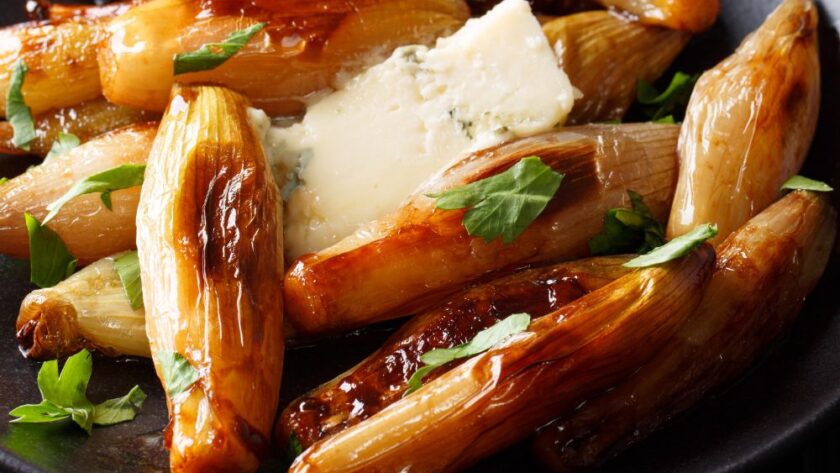I didn’t grow up eating shallots—they always felt like a fancier cousin of the onion, reserved for chefs or steakhouse kitchens. So when I finally tried this Ina recipe, I was skeptical. Could something this simple really be that special?
It can. Here’s how I made it truly Ina-level.
The Game-Changer Step
The magic isn’t just in the roasting—it’s in the stovetop start. Sautéing the shallots in butter and sugar first creates a base layer of flavor that deepens in the oven. I once skipped that step out of laziness, and the final dish just didn’t have the same silkiness or depth.
My Ingredient Notes
- Unsalted butter (6 tbsp) – You want control over the salt. I use a European-style butter (like Plugrá) for extra richness.
- Fresh shallots, roots intact (2 lbs) – Keeping the roots helps them hold their shape. Don’t slice them too small—they shrink more than you’d expect.
- Sugar (3 tbsp) – Balances the acidity of the vinegar. I tested this with brown sugar once—too molasses-heavy. Stick with white.
- Good red wine vinegar (3 tbsp) – Use one you’d actually taste on a salad. I like Colavita.
- Kosher salt (½ tsp) – Diamond Crystal, always. Fine salt makes it too aggressive.
- Fresh ground black pepper (¼ tsp) – Adds just enough heat to cut through the sweetness.
- Flat-leaf parsley (2 tbsp, chopped) – Brightens the finish. I’ve tried skipping it—not the same.
Swaps That Actually Worked
- White wine vinegar – Works in a pinch, but you’ll miss a bit of that red-fruit depth.
- Fresh thyme instead of parsley – Lovely in colder months.
- Ghee instead of butter – A solid dairy-free workaround; slightly nuttier flavor, but very close.
Fixes That Mattered
| What Went Wrong | Why It Happens | How to Fix It |
|---|---|---|
| Shallots burned on one side | Pan too hot or not stirred enough | Keep to medium heat and stir every few minutes |
| Sauce turned bitter | Overcooked vinegar or old shallots | Use fresh shallots and add vinegar off heat |
| Texture was mushy | Overcooked in oven, too small shallots | Use large, uniform shallots and check early |
How to Make Ina Garten’s Caramelized Shallots
- Prep your oven to 400°F. A cast-iron or oven-safe sauté pan is key here—about 12 inches wide.
- Melt 6 tbsp of butter in the pan over medium heat. Add 2 lbs of peeled shallots (keep roots intact) and toss gently with 3 tbsp sugar.
- Cook for 10 minutes, stirring now and then, until the shallots start to take on color. You’re looking for golden edges, not deep browning yet.
- Add 3 tbsp red wine vinegar, ½ tsp kosher salt, and ¼ tsp pepper. Toss to coat.
- Transfer the pan to the oven. Roast for 15–30 minutes, depending on shallot size, tossing once halfway. They’re done when meltingly soft and caramel-tipped.
- Sprinkle with 2 tbsp chopped parsley and serve immediately.

Tiny Habits, Better Results
- I dry the shallots after peeling—extra moisture can steam instead of roast.
- Use a spoon to baste them once during roasting with the pan juices.
- Let them rest 5 minutes out of the oven before serving—the flavors settle and intensify.
How I Store It
- Fridge: Airtight container, up to 4 days. Reheat gently on the stove.
- Freezer: Yes, but the texture softens. Still delicious stirred into risotto or mashed potatoes.
Quick Questions, Real Answers
Q: Can I make this ahead of time?
A: Absolutely. I often make them a day early and reheat gently in the same pan.
Q: Can I use pearl onions instead?
A: I’ve tried. They’re sweeter, but lack the same complex finish. Still works, but it’s not quite Ina.
Q: Why are my shallots not caramelizing?
A: Likely too crowded or wet. Use a wide pan and dry your shallots well before cooking.
Try More Recipes:

Ina Garten Caramelized Shallots
Description
Tender, sweet-savory shallots roasted in butter and vinegar—simple ingredients that turn into something deeply flavorful and elegant.
Ingredients
Instructions
- Preheat oven to 400°F.
- Melt butter in oven-safe sauté pan. Add shallots and sugar, toss to coat.
- Cook over medium heat for 10 min, stirring occasionally.
- Add vinegar, salt, pepper. Toss well.
- Transfer to oven. Roast 15–30 minutes, until tender and caramelized.
- Garnish with parsley. Serve warm.

